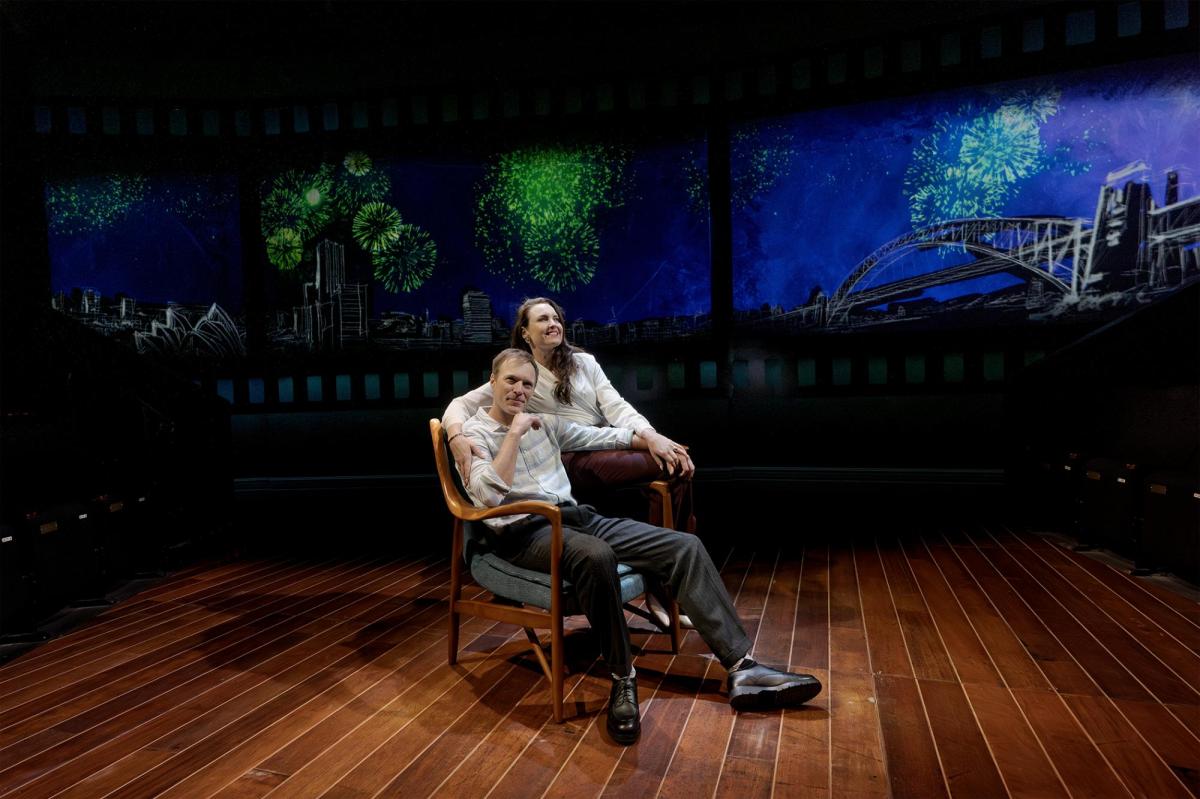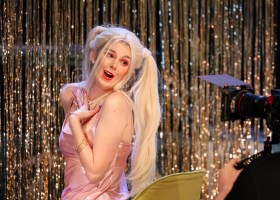The tensions between art and commerce are nothing new. They’ve existed as long as civilisation itself. The rivalry between Australia’s two biggest cities, Sydney and Melbourne, pales in age – but it’s almost as old as modern Australia.
David Williamson’s Emerald City concerns both. Originally written in 1987, it’s also a satire about two parallel industries: film and publishing.
Colin (Tom O’Sullivan) is a principled and successful screenwriter. His wife, Kate (Rachel Gordon), is a book editor with a social conscience. The couple and their children relocate from staid, solid Melbourne to raffish, on-the-make Sydney.
Initially, the pair – particularly Kate – grapple with life in the ‘emerald city’ of Sydney. But they adjust soon enough and under the influence of this modern-day Sodom and Gomorrah, their priorities begin to change.
Colin wants to abandon his principles for greater commercial success. He meets Mick (Matt Minto), a budding screenwriter with little talent but lots of chutzpah, who might help him do it.
Kate, meanwhile, is also falling into Sydney’s wicked ways. She wants to publish an important novel by an Indigenous writer. But her good intentions and treatment of the author are soon called into question.
Emerald City: as relevant as ever
The themes of Emerald City, prescient in the ‘greed is good’ era of the 1980s, are still relevant today. The Sydney-Melbourne rivalry is also explored at length here, with sharp humour. The depictions of pretentious, arty Melburnians versus artless, showy Sydneysiders are close to the bone. Close enough for a ‘funny because it’s true’ appeal. There’s some deeper exploration of the character of each city, too – particularly of Sydney.
When Colin speaks of Sydney’s evils, his very Sydney publisher Elaine (Danielle Carter) retorts: ‘Everyone comes here along their yellow brick roads looking for the answers to their problems – and all they find are the demons within themselves.’
Emerald City: The 1980s
The 1980s are also skewered here. More than most decades, the ’80s is infamous for its fashion. More could have done more with this, with only the character of Helen (Aisha Aidara) unequivocally reflecting the times.
Set, costume and video designer Dan Potra did, however, fashion a brilliant set, strongly supported by lighting designer Morgan Moroney. Backed by gigantic video projections of Sydney scenes, the stage evoked the glitter and panache of 1980s Sydney.
Composer and sound designer Madeleine Picard added a cinematic flair to proceedings; at times, the soundtrack hints at ’80s super soaps such as Return to Eden.
Running through the story, directed by Mark Kilmurry, is a subplot about the importance of telling Australian stories.

When Mike latches on to Colin, to try and produce an Australian rip-off of Miami Vice, it prompts an exploration of why it’s important for countries to have their own stories. It’s pertinent topic almost four decades after Emerald City debuted.
If anything, it’s more relevant than ever today, with international film, television and music streaming services swamping local offerings and government-mandated content regulation struggling to keep pace.
When Williamson wrote Emerald City, he surely had no idea that it could be performed on stage in 2025 and have not aged a day.
But this glittering play speaks directly to today’s audiences in a way that a young, emerging playwright would sell a kidney for.
Emerald City by David Williamson will be performed at the Ensemble Theatre, Kirribilli NSW until 23 August 2025.
Also on ArtsHub:
Betrayal review: Pinter at the Old Fitz in Sydney
There must be something in the air about Harold Pinter; earlier this year, a production of Betrayal was staged in Melbourne by Thursday’s Child Theatre and now his play has been picked up in Sydney by the Sport for Jove company for Old Fitz.
The word ‘betrayal’ does a lot of heavy lifting in this short, sharp, not all that sweet, three (and a bit) person drama/comedy. Written in 1978, the story of a seven-year-long affair is based on a similar affair Pinter himself had, which might account for the sense of verity and the visceral emotion in the sparse but considered dialogue. Read more…






